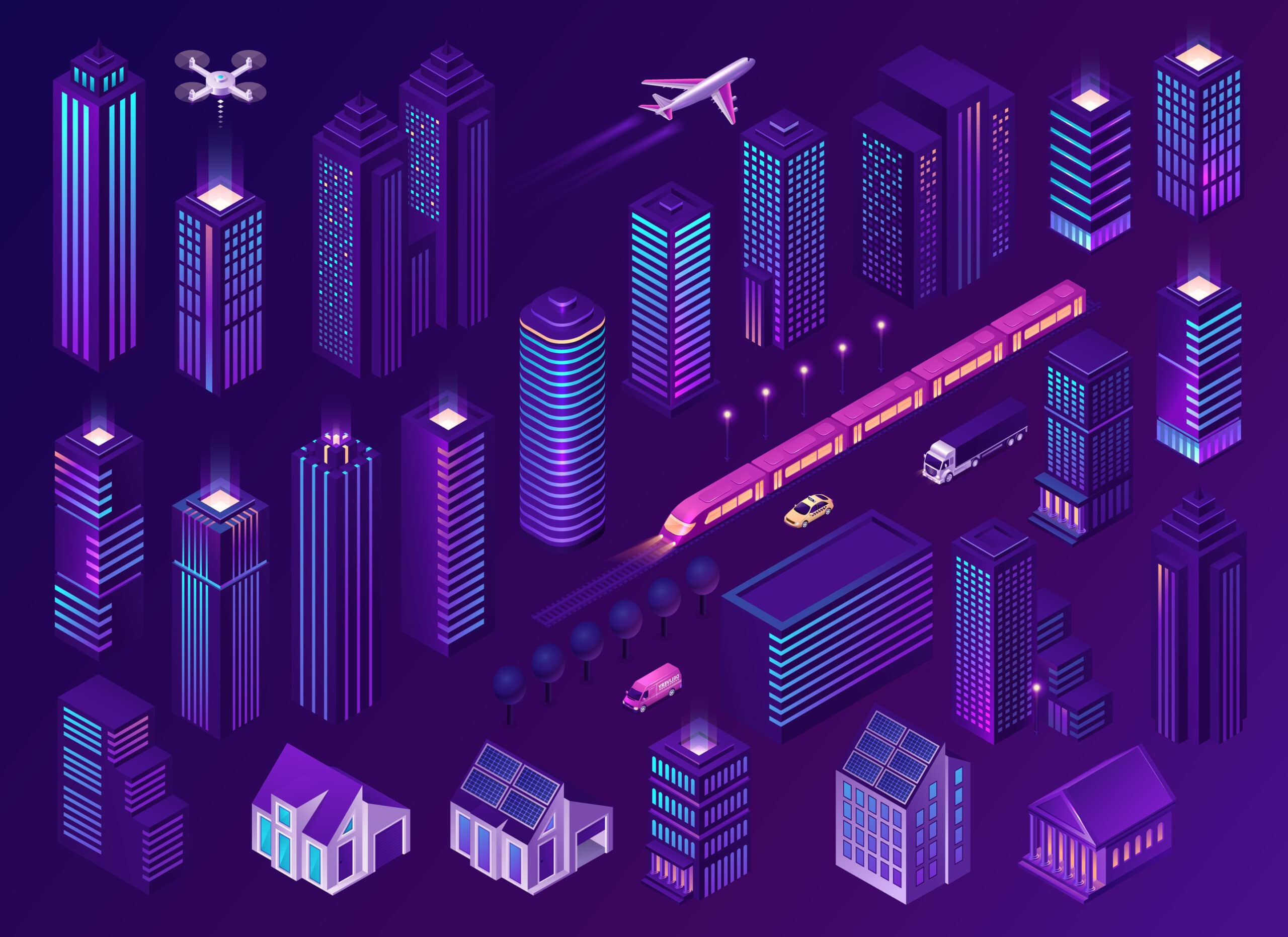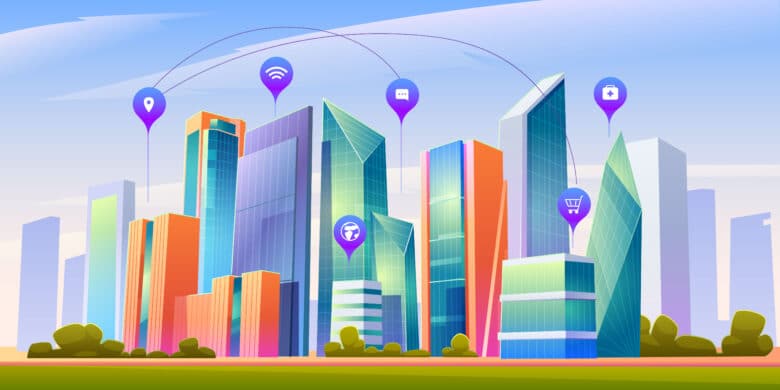Talking about Smart City is also talking about terms that are, little by little, much more familiar to us, such as the Internet of Things (IoT) or Big Data. Although the concept of Smart city is not homogeneously defined, everyone agrees that a Smart city is based on the application of these two terms.
What’s a Smart City?
With the use of information and communication technologies all the systems and pillars of a city are connected. This interconnection provides a huge amount of information that helps to analyse the city, how it works or where the problems are. Likewise and in a more agile way, to be able to offer the citizens efficient, sophisticated and adequate solutions to improve the quality of life and public services.

Illustration by Khwanchi Phanthong
The 8 points of the smart city are very smart
The concept does not apply to an idyllic model of city but is something practical, adaptable to each city according to its needs.
There is no doubt that smart cities are based on 8 fundamental characteristics, all of them “smart”:
- Smart Technology: this is one of the fundamental keys to smart cities. Not only is it possible to provide WIFI to all citizens, but also to install an endless number of intelligent sensors to measure different parameters (temperature, traffic level, pollution, available parking, etc.), as well as other types of technology applied to the service of citizens.
- Smart Infrastructure: with the application of IOT to infrastructures (waste collection systems, roads, digital libraries, etc.) the aim is for these to act as living entities capable of producing information. This information is valid for the analysis and constant improvement of them.
- Smart Buildings: This concept is applied to existing buildings in the city. Not only to be more efficient in terms of energy, but also to have an adequate domotic infrastructure for a better management of the environment.
- Smart Transportation: also called Intelligent Transport Systems (ITS), it means a constant communication between vehicles or between these and infrastructures. The ultimate goal is to maximize the use of existing transport so that its service is optimized, thus emitting fewer emissions, having less traffic jams, etc.

Illustration by upklyak
- Smart Energy: consists of the intelligent and interconnected integration of distributed sustainable energy sources, efficient distribution, application of smart meters and optimized energy consumption.
- Smart Healthcare: under this idea, a complex concept of digital and more efficient use of health systems is being devised. Interconnection between hospitals automatically, using the cloud so that both patient and doctor have access to the tests or diagnoses performed, etc. would facilitate and greatly improve the quality of these services.
- Smart City Design: The challenges for building smart cities are quite diverse and complex. They include issues such as costs, efficiency, sustainability, safety and security including the natural environment, government policy, social communities and the economy.
- Smart Citizens: Under this parameter, the smart citizen is constantly interacting with the smart city. It offers reviews, reports accidents, participates in city initiatives, etc, in an active way.
Some examples
Every year the IES Business School carries out a categorisation of cities under the name of the project Cities in Motion. The school analyses different parameters of the cities, in which this year the following cities stand out as the best cities or best Smart cities:

Photos by Alex Mustaros, Fezbot200 y Jaanus Jagomägi
- London: mainly because of its performance in international projection, human capital and governance
- New York: for its economic development, urban planning and its development in mobility and transport
- Paris: for its very good performance in mobility and transport
Challenges for smart cities
The establishment of such smart cities is presenting challenges that need to be addressed, such as:
- Development of agile policies that allow the promotion and implementation of new technologies and proposals for improvement
- Develop a medium- to long-term strategy for cities. Normally almost all cities are governed by democratic municipal systems that rotate every X years. This means that their management and approach is usually short term.
- Promoting cooperation and creativity through platforms such as Madrid’s Decide Madrid or Finland’s Open Ministry provides citizens with a tool for generating proposals and votes.
References & Resources
- Cities in Motion
- The making of a smart city: policy recommendations, European Commission
- The making of a smart city: best practices across Europe, European Commission
- Smart Cities and Inclusive Growth, OECD
- Freepik: upklyak
- Unsplash: Alex Mustaros, Fezbot2000 y Jaanus Jagomägi
- Vectezy: khwanchai.phanthong




Comments
exceptional
Author
Thank you very much, Elijah